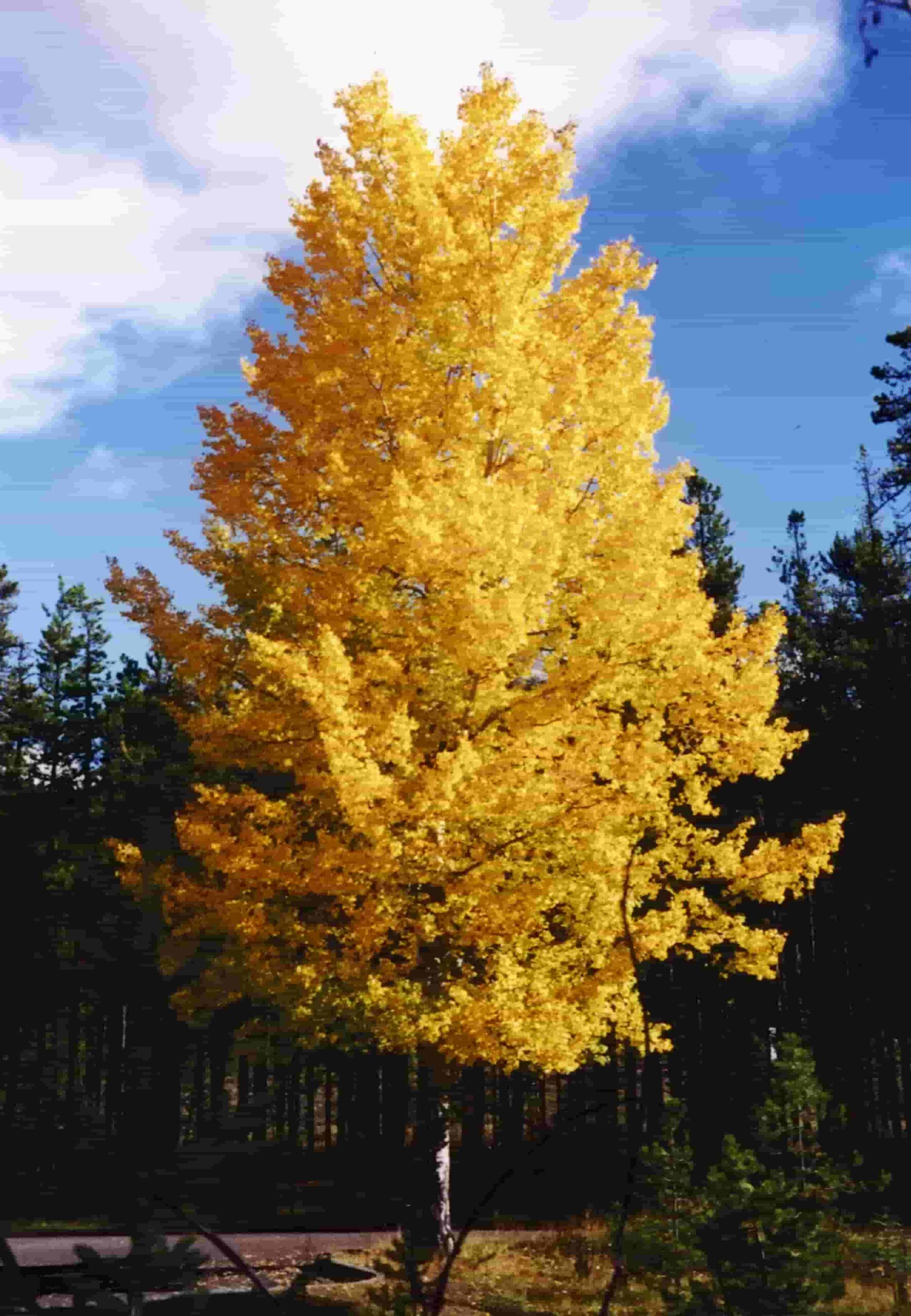Introduction
The Aspen tree, scientifically known as Populus tremuloides, is a captivating species that holds a special place in the natural world. The Aspen tree has come to represent peace and rejuvenation because of its unusual appearance and special qualities. In this post, we’ll examine the this tree’s fascinating characteristics, such as its appearance, growth patterns, ecological importance, and symbolic meaning. Come along on this adventure with us as we explore the Aspen tree’s beauty and mystery.
Table of Contents
- Introduction
- 1. The Appearance of Aspen Trees
- 2. Growth Patterns and Life Cycle
- 3. Ecological Significance of Aspen Trees
- 4. Cultural Symbolism and Mythology
- 5. Environmental Challenges and Conservation Efforts
- 6. The Aspen Tree in Art and Literature
- 7. The Aspen Tree in Landscaping and Horticulture
- 8. Health Benefits and Medicinal Uses
- 9. Wildlife Habitat and Biodiversity
- 10. Aspen Groves: A Photographer’s Paradise
- 11. The Changing Colors of Aspen Leaves
- 12. Aspen Tree Planting and Care Tips
- 13. Aspen Tree: A Source of Sustainable Energy
- 14. Aspen Trees and Climate Change
- 15. Conclusion
1. The Appearance of Aspen Trees
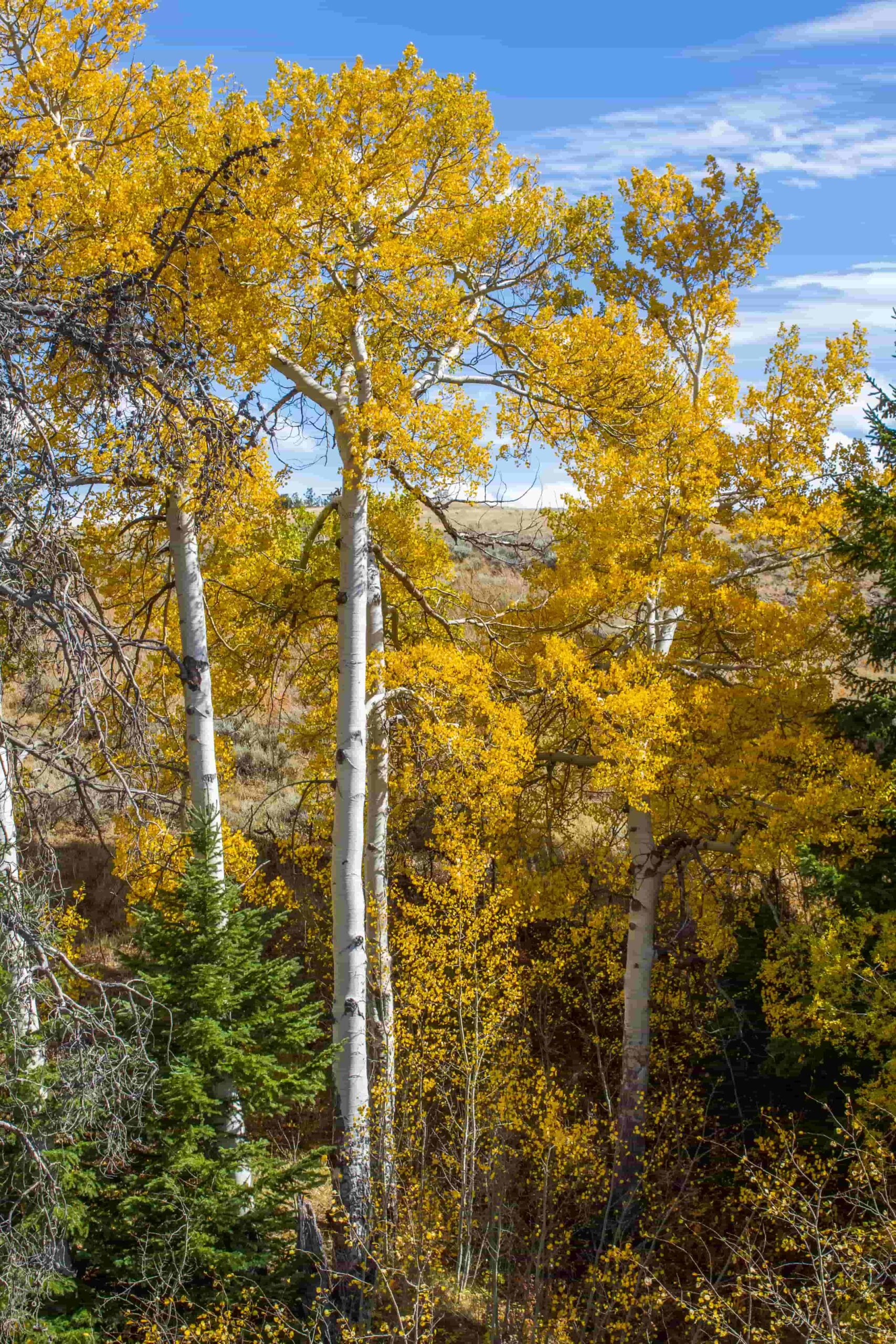
The Aspen tree stands tall with a slender trunk and smooth, white bark that gleams in the sunlight. Its leaves are heart-shaped, vibrant green in the summer, and turn into a spectacular golden hue in the fall. The leaves shimmer and tremble even in the slightest breeze, giving the Aspen tree its nickname, the “Quaking Aspen.” This distinct characteristic adds to the charm and allure of these magnificent trees.
2. Growth Patterns and Life Cycle
These trees have a unique growth pattern. They often grow in large colonies or groves, connected through a vast underground root system called rhizomes. This interconnected network allows the trees to share resources and communicate with each other. The Aspen tree’s life cycle involves periodic regeneration through suckering, where new shoots sprout from the roots, ensuring the continuous renewal of the grove.
3. Ecological Significance of Aspen Trees
Aspen trees play a vital role in maintaining ecological balance. Their extensive root system helps stabilize soil, preventing erosion and protecting watersheds. These trees also provide shade, creating a favorable microclimate for various plant and animal species. Moreover, Aspen groves act as biodiversity hotspots, supporting a wide array of flora and fauna.
4. Cultural Symbolism and Mythology
Throughout history, the Aspen tree has held significant cultural symbolism. In Native American folklore, it represents purity and protection. The trembling leaves are believed to whisper ancient wisdom and connect the earthly realm with the spiritual world. In modern times, this tree is often associated with serenity, inner strength, and the ability to adapt to change.
5. Environmental Challenges and Conservation Efforts
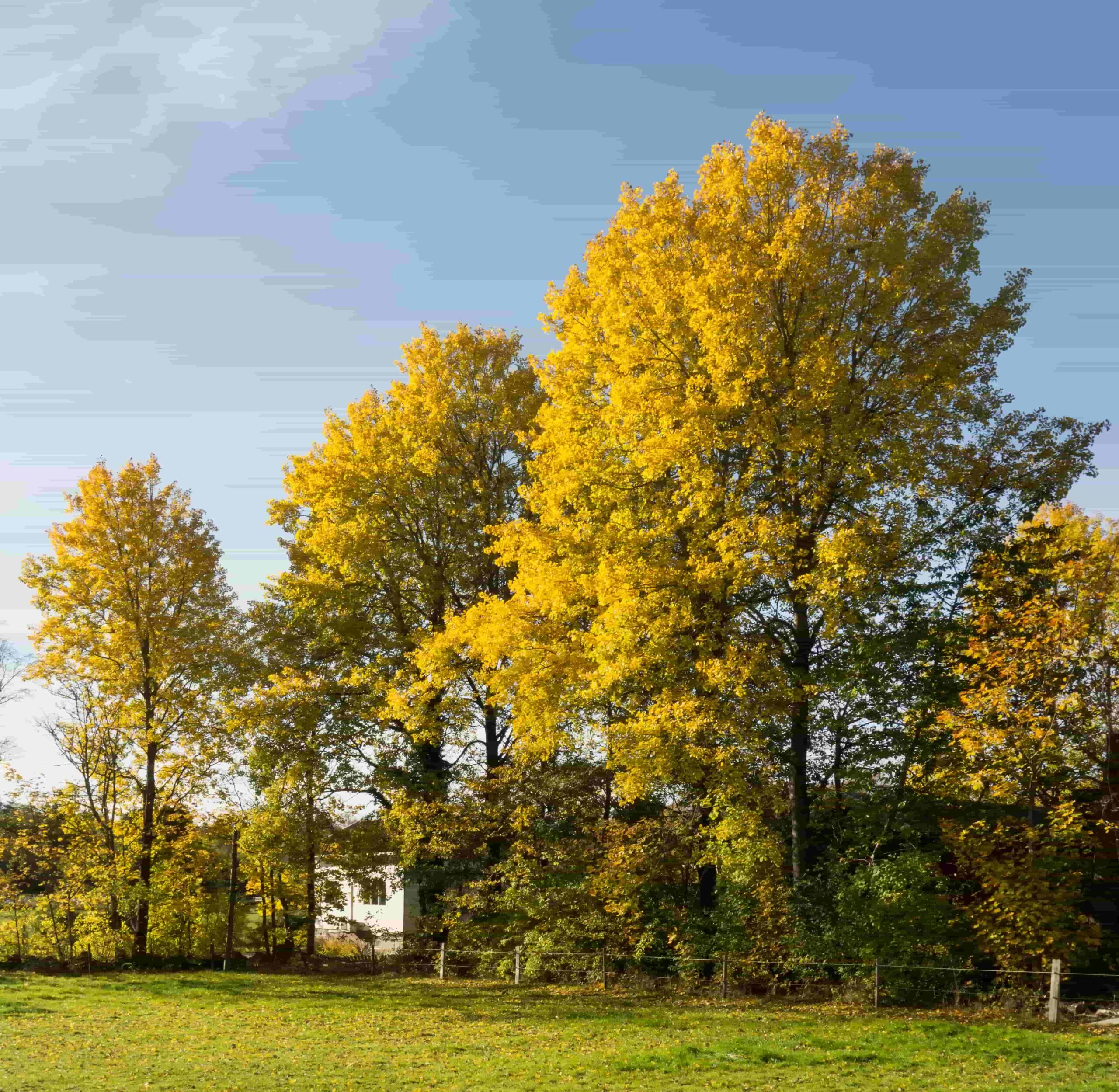
These trees face several environmental challenges, including habitat loss, disease, and climate change. The decline of healthy Aspen groves can disrupt ecosystems and impact wildlife. To combat these issues, conservation organizations and land management agencies work diligently to protect and restore Aspen habitats through sustainable practices and awareness campaigns.
6. The Aspen Tree in Art and Literature
The timeless beauty of these trees has inspired countless artists and writers. From paintings capturing their golden hues to poems describing their ethereal presence, the Aspen tree has become a muse for creative expression. Artists often depict Aspen groves in various art forms, symbolizing tranquility, transformation, and the cycle of life.
7. The Aspen Tree in Landscaping and Horticulture
These trees are a common choice in landscaping and horticulture due to their aesthetic appeal. Their colorful leaves and graceful form provide gardens and parks a touch of elegance. These trees are renowned for their quick development and capacity to flourish in many soil types. However, to guarantee their long-term health and vigor, proper care and maintenance are important.
8. Health Benefits and Medicinal Uses
Beyond their visual appeal, these trees offer various health benefits and have traditional medicinal uses. The inner bark of Aspen has been used by indigenous communities to alleviate pain, reduce inflammation, and treat various ailments. Modern research has identified certain compounds in Aspen bark with potential therapeutic properties, leading to ongoing studies and exploration of its medicinal applications.
9. Wildlife Habitat and Biodiversity
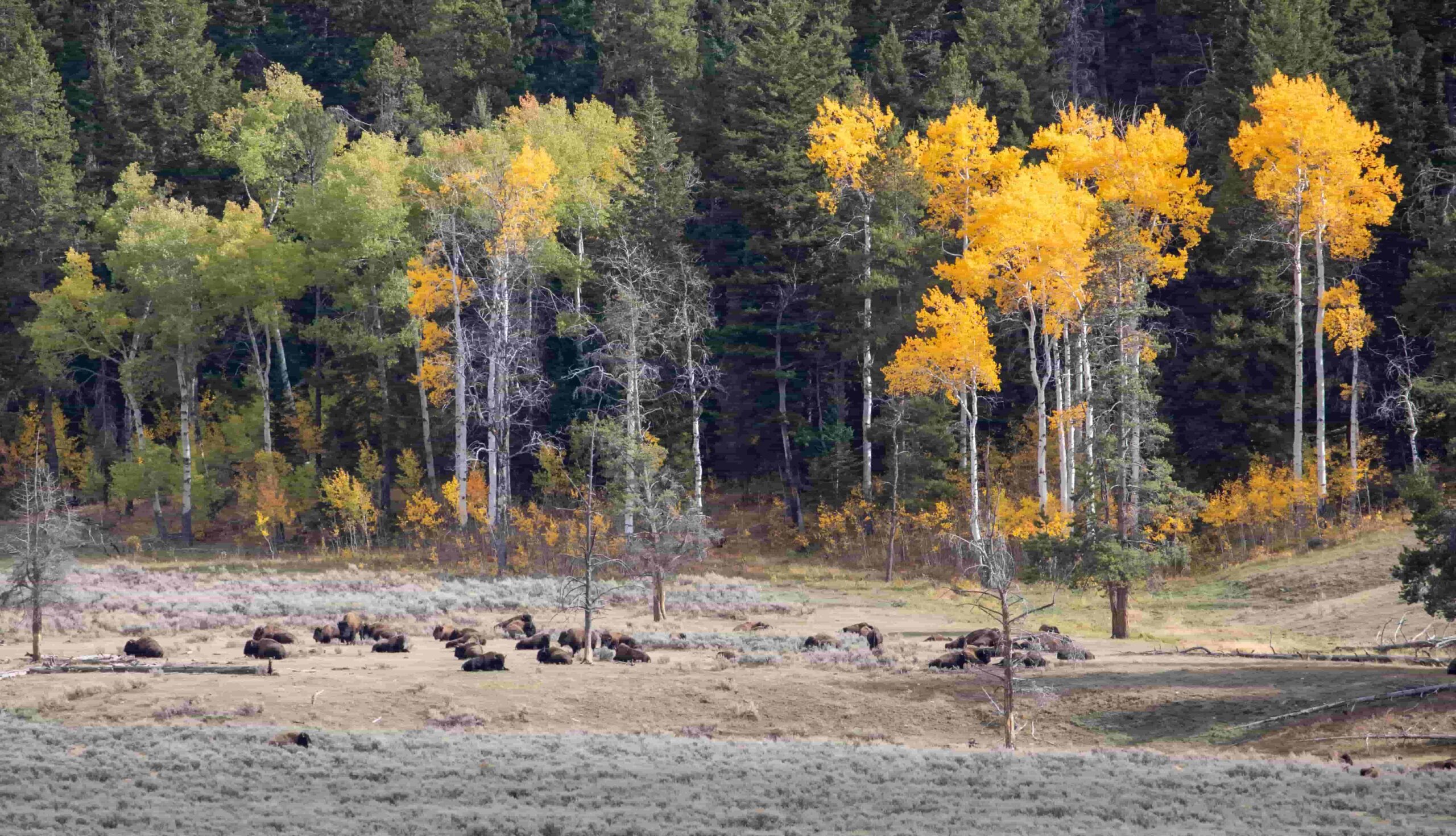
These trees provide crucial habitats for a diverse range of wildlife species. Birds nest in their branches, while mammals find shelter in the hollowed trunks. The leaves and bark serve as a food source for deer, elk, and other herbivores. Additionally, the decaying wood of fallen these trees supports numerous insects, fungi, and microorganisms, contributing to the overall biodiversity of the ecosystem.
10. Aspen Groves: A Photographer’s Paradise
Photographers are drawn to Aspen groves for their stunning visual appeal. The contrasting colors of the golden leaves against the white bark create breathtaking landscapes. The interplay of light and shadow, combined with the quivering leaves, offers a unique and ever-changing canvas for photographers to capture the essence of nature’s beauty.
11. The Changing Colors of Aspen Leaves
One of the most mesmerizing aspects of Aspen trees is their ability to transform with the seasons. As autumn approaches, the vibrant green leaves transition to brilliant shades of yellow, orange, and red. This annual spectacle, known as “Aspen fall color,” attracts tourists and nature enthusiasts from far and wide, providing a vivid display of nature’s artistry.
12. Aspen Tree Planting and Care Tips
If you wish to introduce these trees to your landscape, it is essential to follow proper planting and care guidelines. Pick a spot with sufficient sunlight and well-drained soil. Provide regular watering during the initial stages of growth and establish a routine pruning schedule to maintain their health and shape. Consulting with local arborists or horticulturists can provide valuable insights for successful Aspen tree cultivation.
13. Aspen Tree: A Source of Sustainable Energy
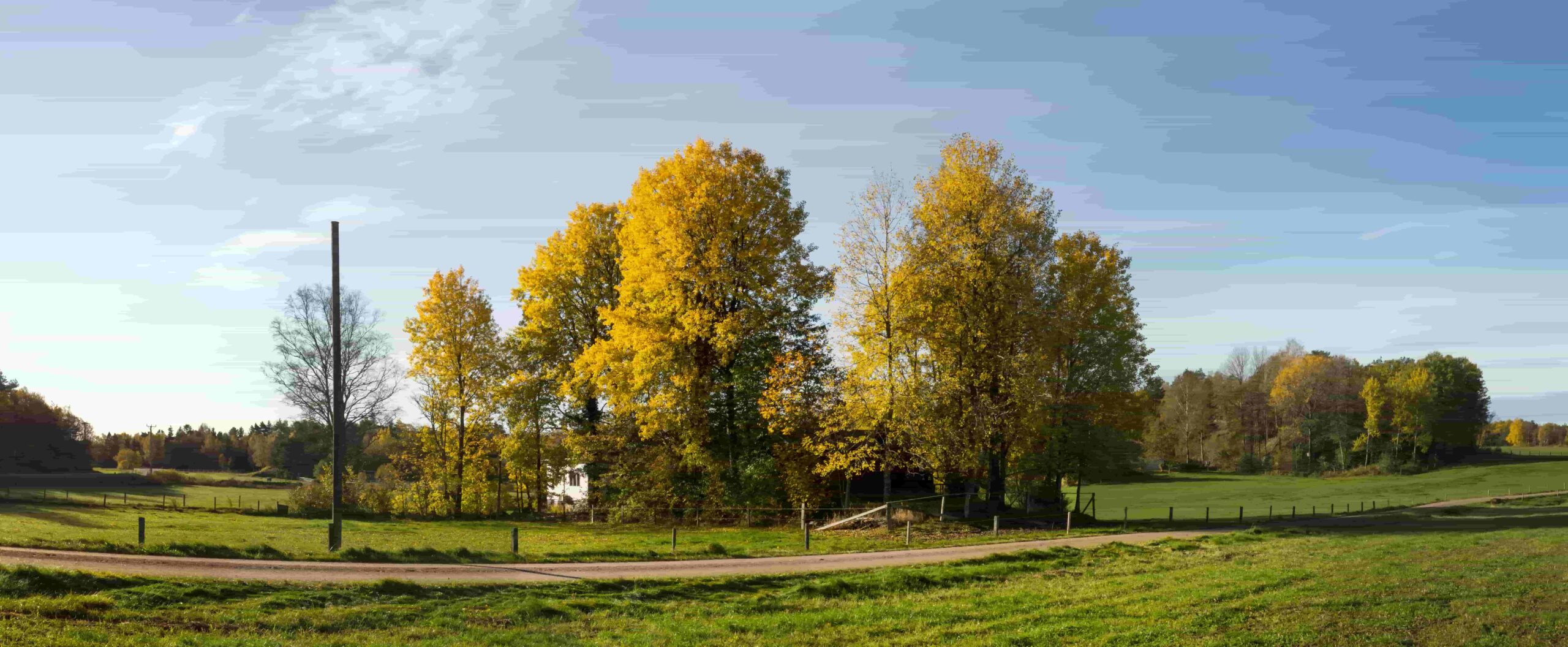
These trees offer potential as a renewable energy resource. Their fast growth rate and ability to regenerate through suckering make them an attractive option for biomass energy production. Aspen wood can be used for heating, power generation, and biofuel production, providing an environmentally friendly alternative to fossil fuels.
14. Aspen Trees and Climate Change
Climate change poses significant challenges to Aspen tree populations. Rising temperatures, prolonged droughts, and increased pest activity can negatively impact their growth and vitality. Scientists and conservationists are actively studying the effects of climate change on Aspen ecosystems and implementing strategies to mitigate its impacts, such as reforestation initiatives and adaptive management practices.
15. Conclusion
The Aspen tree, with its graceful presence and symbolic significance, continues to captivate the hearts and minds of people worldwide. From its trembling leaves to its interconnected root system, this magnificent tree represents resilience, harmony, and the cycles of life. Whether admired for its visual beauty, valued for its ecological contributions, or cherished for its cultural symbolism, this tree reminds us of the inherent connection between humans and nature.
In conclusion, the Aspen tree stands as a magnificent symbol of tranquility and renewal. Its unique appearance, growth patterns, ecological significance, and cultural symbolism make it a fascinating subject of study and appreciation. Whether you encounter these trees in the wild, incorporate them into your landscape, or admire their beauty through art and photography, these remarkable trees continue to inspire and captivate us with their timeless allure.
FAQs (Frequently Asked Questions)
1. Are Aspen trees only found in certain regions?
As an iconic North American tree, Aspen trees are predominantly found in the western United States and Canada. They thrive in areas with cold winters, abundant sunlight, and well-drained soils.
2. Do Aspen trees require special care in landscaping?
Aspen trees can be successfully incorporated into landscaping, but they do require some specific care. It’s important to provide adequate water during dry periods, especially in the early stages of growth. Regular pruning helps maintain their shape and overall health.
3. Can Aspen bark be used for medicinal purposes?
Yes, Aspen bark has traditional medicinal uses. It has been used to alleviate pain, reduce fever, and treat various ailments. However, it’s crucial to consult with a healthcare professional before using Aspen bark for any medicinal purposes.
4. How do Aspen trees contribute to wildlife habitat?
These trees provide habitats for a wide range of wildlife species. Their branches offer nesting sites for birds, while the hollowed trunks serve as dens for mammals. The leaves and bark serve as a food source for herbivores, supporting the local wildlife population.
5. Are Aspen trees affected by any diseases or pests?
Yes, these trees can be susceptible to certain diseases and pests. Common issues include fungal infections, leaf spot diseases, and insect infestations. Regular monitoring and prompt action can help mitigate these problems and maintain the health of Aspen trees.

